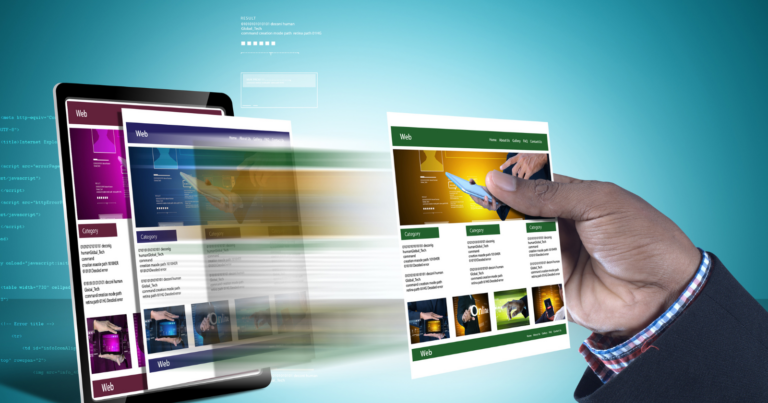This post was significantly updated in June 2025 to reflect new information. An archived version from 2016 is available for reference here.
A few weeks ago, I audited a client’s Google Ads account that was hemorrhaging cash. Their bids were competitive, their landing pages solid, yet click‑through rates hovered around 1%.
The culprit? Ad copy that read like it was written by a disengaged intern on their lunch break.
In a metrics‑driven world, copy is the final handshake between intention and action—and when that handshake is limp, even the best targeting can’t save you.
Research from Wordstream shows that the top‑10% of Google Ads achieve a CTR of 11.45% or higher, while the median languishes below 2%. The gulf between those numbers is usually filled—not by budgets, but by words.
If your PPC results feel stuck in neutral, chances are your ad copy is doing the bare minimum. Let’s diagnose why—and prescribe fixes that align with modern, human‑centered marketing rather than adrenaline‑pumped keyword stuffing.
1. Your headline speaks to algorithms, not to people
Problem: Many advertisers still write headlines the way early SEO gurus wrote meta titles: jammed with keywords, divorced from emotion, and pinned so rigidly that Google’s algorithm can’t surface variations that match context.
If every variant is a thesaurus remix of the same keyword, users see monotony. The net result is wasted impressions, sagging Quality Scores, and higher CPCs than your competitors who sound human.
Solution: Borrow a page from newsroom journalism. Lead with one clear benefit (“Cut Payroll Processing Time in Half”) and follow with a credibility cue (“Trusted by 8,000 CFOs”). Then let Google’s machine learning test permutations.
In multiple split‑tests I’ve run for clients, combining a clear benefit with a credibility proof point consistently beats keyword‑stuffed headlines—often lifting click‑through rates by 25‑30%. Even small percentage gains here compound over thousands of impressions and can dramatically lower your cost per conversion.
2. Your value proposition is buried—or missing entirely
Problem: Phrases like “We’re #1” or “Industry‑Leading Solutions” eat precious characters without explaining why a prospect should care.
In crowded SERPs, vagueness is invisibility. When every advertiser claims to be “best,” these superlatives become wallpaper; users skip them in milliseconds, and you end up paying premium bids for zero attention.
Solution: Isolate one differentiator that matters to your audience (price, speed, guarantee, ethical sourcing). Translate it into everyday language and place it in either Headline 2 or Description 1.
Swapping a generic boast for one concrete reason to click gives you a bigger chance of lifting both CTR and on‑page engagement. No sweeping claims or secret formula—just clarity. Remember: specificity sells; vagueness costs.
3. You forgot the story arc
Problem: PPC is often treated as a transactional micro‑moment, yet even 180 characters can house a narrative arc.
Without that pulse—beginning (pain), middle (relief), end (next step)—the ad feels flat. Flat ads generate weak engagement signals that feed back into Google’s performance metrics, gradually throttling impression share.
Solution: Apply a mini PAS formula—Problem, Agitation, Solution. Example: “Manual invoices delay your cash flow. Stop the bottleneck with instant e‑billing. Book a demo today.”
Storytelling isn’t the enemy of brevity; it’s the scaffolding that makes brevity persuasive.
4. Your call‑to‑action is either timid or tyrannical
Problem: “Learn More” is a timid whisper; “BUY NOW!!!” is a shout that startles. Both extremes misread funnel intent.
Timid CTAs leave prospects directionless, while aggressive ones trigger psychological reactance, causing users to recoil and skip your listing—driving up cost per acquisition.
Solution: Map CTAs to intent signals. For top‑of‑funnel queries, use “See Pricing” or “Explore Options.” For high‑intent keywords, tighten to action verbs like “Start Free Trial” or “Get Instant Quote.”
Aligning CTA language to readiness can lift clicks and improve lead‑to‑sale rates without increasing spend.
5. You write ads in isolation from the landing page
Problem: Nothing kills trust faster than an ad‑to‑page mismatch.
When users click for a specific offer and land somewhere that doesn’t mention it, they bounce—and Google’s Quality Score punishes you. All those paid clicks turn into silent budget leaks.
Solution: Never send paid clicks to a catch‑all homepage. Instead, draft your ad copy after the landing page is wire‑framed, and point every ad to a URL built to mirror that exact promise. Homepages must speak to everyone; campaign pages can (and should) be laser‑focused.
Make sure the messaging, hero image, and primary call‑to‑action on the landing page echo the language of the ad—down to the exact discount, benefit, or differentiator you highlighted.
Track each campaign with unique URLs or UTM parameters so you can measure performance cleanly.
If you tweak the offer in the ad, update the landing page the same day—consistency drives both user trust and lower acquisition costs.
Bonus: A pragmatic workflow for continuous ad‑copy testing
Even the best copy ages. Competitors mimic your angles, user expectations shift, and platform algorithms evolve. High‑performing advertisers treat copywriting as an iterative loop, not a one‑time task. Here’s a simple cadence you can steal and adapt:
- Hypothesis sprint (weekly): Choose one campaign and isolate a single variable—headline structure, value prop, or CTA language. Draft three new variants that each test a different angle. For instance, if your current headline is benefit‑led (“Cut Payroll Time in Half”), test a proof‑led version (“Trusted by 8,000 CFOs”) and an emotional one (“Finally, a Payday Without Chaos”).
- Deployment (Monday): Upload your variants into Responsive Search Ads, ensuring pinning is disabled so Google can rotate freely. Set a 7‑day time box for initial signal‑gathering.
- Micro‑analysis (mid‑week): At the halfway mark, check impression share and early CTR shifts. Kill any variant underperforming by 40% or more to conserve spend.
- Macro‑analysis (end of week): Examine not just CTR but downstream metrics—bounce rate, form‑fill completion, cost per qualified lead. A flashy headline that drives cheap clicks but high bounce is a false win.
- Knowledge capture (Friday): Document what worked and why in a shared copy bank. After a month, you’ll have a data‑driven style guide unique to your brand, reducing guesswork for future launches.
This rinse‑and‑repeat approach requires discipline but pays compound interest. Over a quarter, even modest weekly gains of 5–7% in CTR can translate into significant cost savings or additional conversions.
Closing insight: Copy is the cheapest optimization lever you haven’t pulled
Budgets scale. Keywords exhaust. But a sharpened sentence costs nothing except thoughtfulness—and it compounds.
Treat every impression as a micro‑conversation. Would you open with jargon, vague boasts, or a mismatched promise in person? Probably not. Your ad copy shouldn’t either.
Audit one campaign today using the five checkpoints above. Rewrite, relaunch, review the data. When the numbers tick upward, remember: words moved them. Copy is code—for humans.










